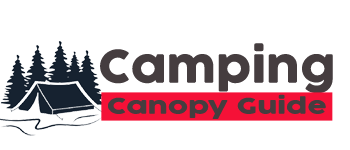
Best Guy lines for tents
Guy lines are cords or ropes that are used to provide stability and support to a structure, such as a tent, tarp, or canopy. They are typically attached to the top of the structure and anchored to the ground or another fixed object to prevent it from swaying or collapsing.

KRATARC 164ft Camping Rope Outdoor Guy Lines
The color of the line is a bit hard to see in daylight over grass, but at night a light shows the reflective areas well. Easy to see if you shine a light on them.

Hikeman 6 Pack 4mm Outdoor Guy Lines
These work very well and have held up great. Good quality and even light reflecting at night.

KRATARC 4m Outdoor Guy Lines
This is a handy rope to have around. These have the Metal Tension bracket which work. These are decent sized ropes for a small tent or an Awning, made of a polyblend, not nylon like paracord. The adjustment devices are a plus and give you the ability to tension the ropes after they are tied in place.
The main uses of guy lines are to:
- Provide stability and support to the structure: Guy lines help to keep the structure from collapsing or tipping over, especially in windy or stormy conditions.
- Increase the usable space: By using guy lines, you can increase the usable space within the structure by creating more headroom and allowing for a larger footprint.
- Improve ventilation: Guy lines can be used to adjust the shape of the structure, allowing for better air flow and improved ventilation.
- Hammock support: Guy lines are often used with hammocks to provide additional stability and support.
- Emergency shelter: Guy lines can be used to quickly and easily construct emergency shelters in the wilderness or other outdoor environments.
Guy lines are an important tool for anyone who spends time outdoors and needs to set up a shelter or other structure. They help to provide stability, support, and protection from the elements, making outdoor activities more comfortable and enjoyable.
When choosing a guy line, you should consider the following factors:
- Material: The most common materials for guy lines are nylon, polyester, and Dyneema (also known as Spectra or UHMWPE). Each material has its own strengths and weaknesses, so you should choose the material that best suits your needs. Nylon is strong and durable, but it stretches when wet. Polyester is strong and resists stretching, but it is not as durable as nylon. Dyneema is extremely strong and lightweight, but it is also expensive.
- Length: The length of the guy line will depend on the size of the structure and the anchoring point. You should measure the distance from the top of the structure to the anchoring point and add a few extra feet to allow for tying knots and adjusting the tension.
- Thickness: The thickness of the guy line will depend on the weight of the structure and the anticipated wind conditions. Thicker guy lines are stronger and more durable, but they are also heavier and more difficult to pack.
- Reflective properties: Some guy lines are reflective, which can help you locate your structure in low light conditions.
In general, a good guy line should be strong, durable, and easy to tie and adjust. Nylon and polyester are both good choices for most applications, while Dyneema is best for lightweight or high-performance applications.





